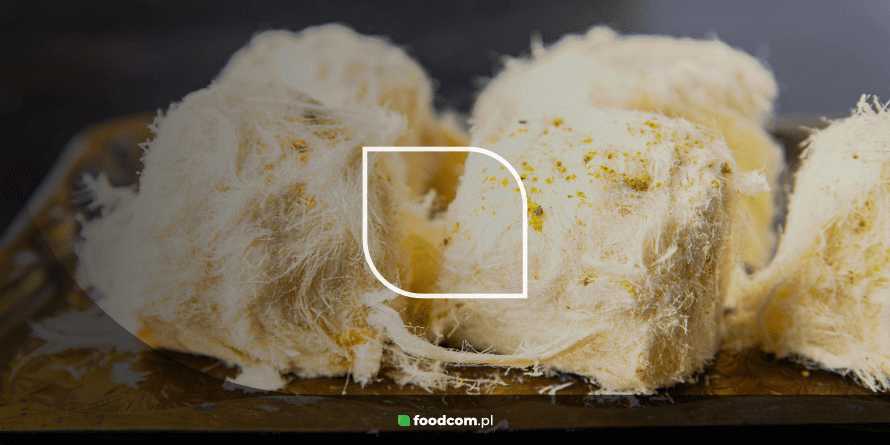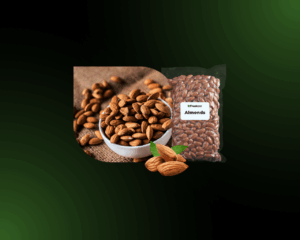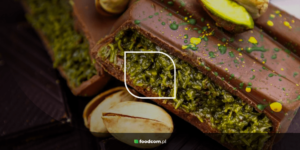- Pişmaniye is a traditional Turkish sweet with a fibrous texture and a buttery, sugary taste.
- It is made from flour, sugar, and butter, and its production requires the dough to be stretched by hand into thin strands.
- It is used as a dessert, decoration, and ingredient in modern confectionery compositions.
Pismaniye, known as ‘angel hair’, is a classic confectionery product originating from Turkey that has gained recognition for its fibrous texture and mild, buttery-sugar flavour profile. The product, deeply rooted in regional tradition, is now gaining new uses – not only as a stand-alone sweet, but also as an ingredient in modern dessert compositions and as a decorative element in premium products.
What is pismaniye?
This confectionery product is made from three basic ingredients: wheat flour, butter and sugar. The end result resembles fluffy candyfloss, but unlike it, pişmaniye is more compact, fibrous and slightly crumbly. It is characterised by a dry, stringy texture and a uniform, buttery-sugar taste.
In its form and preparation, it resembles other oriental sweets such as Iranian pashmak or Indian sohan papdi. All these delicacies have in common the technique of stretching the paste by hand into thin fibres, although they differ in the ingredients used and the characteristic flavour.
The production process
Traditional manufacturing methods are true confectionery craftsmanship. First, the flour is roasted in butter, which gives it a slightly nutty flavour. At the same time, a caramel is prepared from sugar and water, which must reach the right temperature and consistency. Once the two masses are combined, the laborious stage of stretching and folding the dough by hand follows, until fine fibres – as thin as hair – are obtained.
Modern production is increasingly using machines, which speeds up the process and maintains consistent quality. Nevertheless, connoisseurs believe that the manual method gives the dessert a more complex character and a unique texture that is difficult to reproduce under industrial conditions.
Use in the food industry
Pismaniye is traditionally eaten as a stand-alone sweet – often served on special occasions such as holidays or weddings. However, its attractive form and subtle flavour have led to its use in modern desserts as well. It has become particularly popular as a decoration for luxury sweets – for example in premium chocolates from Dubai, where pismaniye is an element that emphasises the exclusivity of the product.
Moreover, it is increasingly appearing in fusion cuisine and haute pâtisserie, as a contrasting ingredient in compositions with ice cream, mousses or puff pastry-based desserts. Thanks to its light texture and aesthetics, it fits in perfectly with modern culinary trends.
Benefits for producers and consumers
For producers, including pişmaniye in the range is a way to introduce a product with high cultural recognition and unique sensory characteristics. It can play a decorative, structural or flavourful role in more complex recipes, attracting the attention of the premium segment.
For consumers, the product offers an alternative to conventional confectionery – it stands out for its low level of processing, simple composition and unusual texture. In addition, its aesthetic appearance and exotic origin can add value to the culinary experience.
Market trends and export potential
In recent years, there has been a growing interest in traditional food products in a refreshed form. Turkish delicacies fit perfectly into this trend – bridging the gap between history and modernity. In foreign markets, particularly in Europe, North America and the Middle East, it is gaining popularity as an ingredient in luxury desserts.
Social media, such as Instagram and TikTok, have played a key role in popularising this glamorous treat. Combined with the fusion cuisine trend, ‘angel hair’ is gaining global export potential.
Pismaniye is an example of a sweet that combines the simplicity of its ingredients with the craftsmanship of its handcrafted production and its wide culinary potential. It can function both as a finished product and as a creative element in contemporary desserts – from luxury chocolates to striking restaurant compositions.
For manufacturers and confectioners, it is an opportunity to introduce something that stands out not only in taste and texture, but also in story and form. It is worth looking at this product from the perspective of innovation that draws on tradition and using it as a unique ingredient in modern desserts with global appeal.










